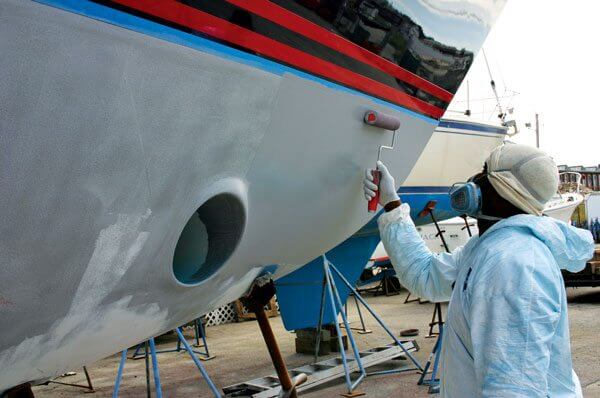You filled up at the fuel dock, spent the day water skiing, trolling slowly, or cruising and just got back to the dock, whereupon, you looked at the fuel gauge. The tank is almost empty. In fact, had you spent another hour fishing you may have had to call Sea Tow to get you home!
What happened? Why did you use so much fuel?
For the most part, fuel burn is directly related to speed. Basically, the faster you go, the more fuel you burn – until you get on full plane, that is. When the boat is on full plane fuel consumption drops slightly, compared to being in the displacement mode.
But that’s not the whole story… Here are some additional tips.
 Let’s look at a few figures and a chart. Figure 1 shows a basic resistance vs. speed chart.
Let’s look at a few figures and a chart. Figure 1 shows a basic resistance vs. speed chart.
As you can see on the left, the first part of the chart shows the boat in displacement mode where the resistance is lowest.
The maximum displacement speed can easily be calculated as being up to 1.5x √lwl (first vertical line on the chart). That is 1.5 times the square root of the waterline length.
As the boat accelerates it moves into the semi-planing regime where speed is proportional to about 2.5x √lwl. In the semi-planing regime fuel consumption is at its highest until the boat moves (past the second vertical line) into the true planing mode. In the true planing mode, usually around 3- to 4x√lwl, the boat is supported by dynamic lift, and fuel consumption drops. Thus, if you want to optimize fuel efficiency, it is best either to run in the displacement mode or in the true planing mode.
Don’t Forget your Hull Bottom to be more fuel efficient

The hull bottom must be smooth. At slow speeds, frictional resistance is about 70% of the total resistance of the hull. While this percentage decreases as speed increases, it tells you that making the hull bottom as smooth as possible will increase speed or decrease fuel consumption.
This means that spraying the bottom paint instead of rolling it on makes the bottom smoother. Keeping slime and crustaceans off the hull bottom is essential, so you should clean the boat bottom once in a while. Racing yachts have their bottoms cleaned monthly or even weekly in areas where sea growth is bad. Any powerboat can benefit from a clean bottom.
Making sure the fairing for the depth sounder or the zincs is smooth, is part of making the hull bottom smooth. Any protuberance on the hull bottom increases hull resistance which means increased fuel usage. If you have to stick a zinc or a thru-hull on the hull bottom, make sure it is faired into the hull smoothly to minimize drag. On any boat, a bow thruster increases drag quite considerably, so it is essential to minimize this drag by increasing the fairing slightly ahead of the aperture to allow water to be directed around the hole.
Other Tips to Increase Fuel Efficiency

Other things you can do include letting your engine warm up before leaving the dock or mooring. A warm engine uses less fuel than a cold one. Just look behind you when you jam the throttles forward. See that cloud of blue smoke? That’s partially burned fuel being exhausted from your engine and costing you money.
When using your engine, accelerate slowly and evenly. Slamming the throttles ahead is a sure way to increase fuel burn.
Trim the engine to maximize speed and minimize fuel usage. In many outboards this means setting the propeller shaft perfectly horizontal to the water surface. Tipping the outboard too far up shoots water up behind the boat in spectacular fashion, but costs you fuel.
Check your propeller blades for dents and dings. That time you went aground on a rock, bent the tip of one blade and took a chunk out of another might have caused a slight vibration, but it sure is costing you fuel. It is far less expensive to get your propeller blades repaired than to run with bent or damaged blades.
By keeping the underwater portion of your boat smooth and in good repair and accelerating slowly with a warm engine, you may well be surprised how much less fuel you use compared with your reverting to your old cowboy ways of hard acceleration and neck snapping shifts from ahead to astern.








